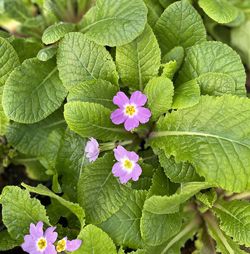Sesleria
Moor Grass
This genus of reliable cool-season grasses pays homage to Leonardo Sesler, an 18th century Venetian botanist and physician who studied European flora. Sesleria’s long-lived carefree clump makes a superlative ground cover for intimate gardens or larger scale plantings.
Each $12.00
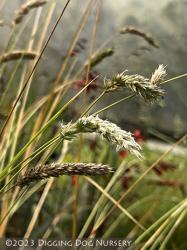
Our list of garden-worthy Sesleria is quickly growing and we’re pleased to add this well-groomed no-fuss species, hailing from southwestern Europe and northern Africa. Narrow green leaves propel numerous firm slender stems topped with a luminous flurry of silver-laced white blooms that make splendid cut flowers. Light green in dappled shade and more chartreuse when exposed to sunny drier conditions, the steadfast semievergreen mound can grace a stylized meadow, the rockery or the edge of a pathway.
Blooms July–October
Size: 16" – 20" high x 12" wide.
Hardy to zone 4.
Each $12.00
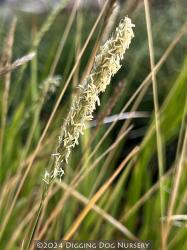
Indigenous to southern Europe and the Caucasus region, this accommodating grass emphasizes a low orderly mound of slender, rich yellowish green blades garnished with narrow spiky silver-white inflorescences in autumn, which later morph into attractive golden-tan seed heads. Easy-care Autumn Moor Grass is favored by many gardeners, especially acclaimed plantsman Piet Oudolf, who has utilized broad sweeps at both NYC’s Highline Garden and the Lurie Garden in Chicago. Ideal planted as an expansive ground cover for informal settings, Sesleria autumnalis’ tufted nearly evergreen clump looks spiffy most of the year, triumphing over erosion, light shade, black walnuts and infrequent dry spells, plus clay, sandy or alkaline soil.
Blooms September–October
Size: 15" – 20" high x 12" – 18" wide.
Hardy to zone 4.
Sesleria x ‘Brushstrokes’ (G-0613)
Each $12.00
A superb, recently introduced evergreen hybrid from grass aficionado John Greenlee’s previous southern California nursery, this versatile 12 to 16 in. high, dense clumping grass yields slim two-toned blue-green blades. The honey-hued volumes of plump, ample-sized inflorescences crest nearly 2 ft. tall, slender sturdy stems, while performing an extraordinary light-catching dance when the wind whooshes through. Tailor-made for meadow-style gardens, peppy ‘Brushstrokes’ enchants the butterflies, endures variable soil conditions and lends handsome well-behaved accents to mixed borders and mass plantings. (PPAF)
Blooms June–October
Size: 2-1/2' – 3' 0" high x 2' 0" wide.
Hardy to zone 4.
Each $12.00
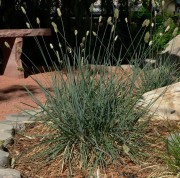
This European native’s sturdy tuffet fashions a long-lived and versatile, noninvasive ground cover. Easily cultivated, low-growing Blue Moor Grass puts forth a dense evergreen mound of soft, two-toned leaves, which are glaucous blue on top and dark green beneath. The twisted and curvy leaves present a cool blue-green base for small spiky panicles of purplish black flowers that mature to a silvered green. With enough fortitude to handle cold weather and alkaline soils, Sesleria caerulea is unrivaled as a filler between larger grasses or for edging a pathway, and equally impressive when massed.
Blooms March–June
Size: 8" – 12" high x 8" – 12" wide.
Hardy to zone 4.
Each $12.00
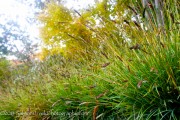

Exhibiting attributes from both parents, this trim-looking evergreen, discovered by grass aficionado John Greenlee, is thought to be a hybrid between Sesleria caerulea and Sesleria autumnalis. Blue-tinged green blades bear a likeness to Sesleria caerulea’s, but are longer, while the blooms resemble those of Sesleria autumnalis, except for being thicker, more elongated and for turning a purplish brown hue when mature. Topped by reflective green inflorescences with creamy-yellow pollen sacs, thin stems rise well above the amenable upright clump that withstands a multitude of exposures such as sun, shade, moisture, heat and drought. ‘Greenlee’s sprightly verdant form can be massed in a meadow or a more formal setting.
Blooms June–October
Size: 12" – 15" high x 15" – 18" wide.
Zone 6/7.
Always tidy, sadly underused and simple to maintain, the tufted silvery-blue mound of this dapper European denizen spawns a taller habit, broader blades and larger blooms than those of Sesleria caerulea. Copious early-flowering ebony-colored inflorescences with creamy-yellow pollen sacs are perched on slender upright stems, which eventually slacken and bend sideways above glaucous grayish green semievergreen leaves, donning crisp dark green undersides. Appreciative of adequate moisture plus a light trimming to refresh its pert visage, Sesleria heufleriana withstands dry conditions once established, makes an attractive cohort for spring bulbs and looks striking when planted en masse, either beside a path or in a border.
Blooms April–August
Size: 2' 0" high x 18" wide.
Hardy to zone 4.
Each $12.00
Populating central and southern Italy and often found in calcium-rich mountainous areas, Gray Moor grass is the tallest Sesleria we offer. Dense, tufted mounds of narrow, pointy gray-green blades imbued with cool blue shades cushion the cone-shaped dark chocolate-colored blooms that don bright greenish yellow anthers. Drought tolerant near cooler coastal areas, Sesleria nitida maintains a winsome year-round presence plus makes a sturdy no-fuss candidate for mass plantings in larger gardens or singularly where space is limited.
Blooms May–early July
Size: 18" – 2' 0" high x 15" wide.
Hardy to zone 4.
Each $12.00
Native to Austria, Hungary, Yugoslavia and the Czech Republic, this delightful semievergreen grass develops luminous woolly-looking white blooms and a resilient lime-loving bent. Stiff linear, smooth green blades with prominent veins compose an upright compact clump that supports the ample showing of plump oblong-shaped inflorescences atop short stout stalks. Unhampered by shade and occasional drought, Hungarian Bluegrass can be massed as a ground cover, planted amid the rockery or ensconced up front in a mixed border, where it prefers sunshine or dappled light plus dry to moderately-moist soil.
Blooms March–May
Size: 15.8" high x 15" – 18" wide.
Hardy to zone 5.










